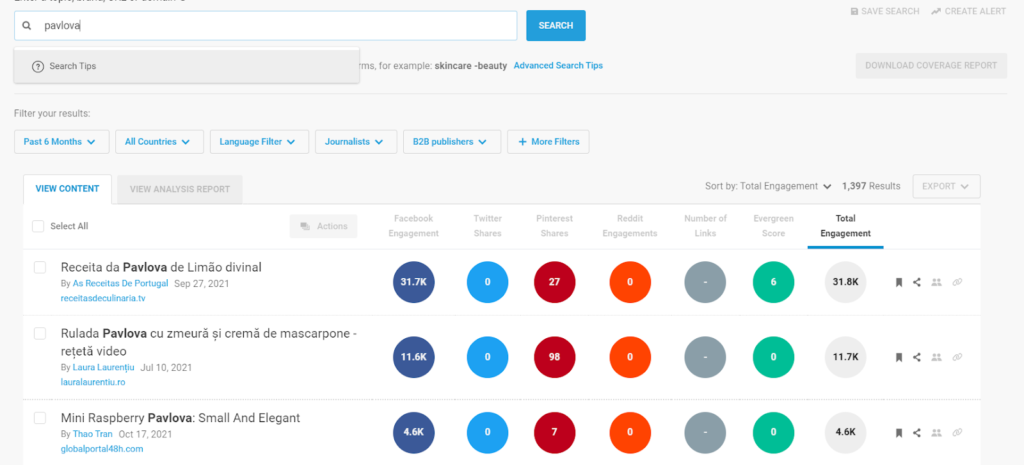
How To Test Content For Virality
The internet’s attention has converged to a small number of platforms like Youtube, Instagram, and Google.
Naturally, the content creators of this world go to those platforms flooding them with content. So getting eye’s on your content has become infinitely more difficult.
On Instagram alone, there are 100 million photos and videos uploaded every day.
So if you want more views, likes, and clicks, you need to get a little more tactical and make sure there’s demand for what you’re creating.
Here are three free platforms you can use for research.
Quora
Quora is the world’s largest question and answer platform.
Suppose you have a content idea. Hop on quora and see if anyone is asking questions related to your content.
Example: You’re going to create an Instagram carousel post for making your favourite cake, a pavlova.
You can search ‘pavlova’ on Quora and see what questions people ask and answer about these cakes. Answers with the most upvotes tell you what people want to know.

Buzzsumo
Buzzsumo is a tool that tells you what content is performing the best across the internet.
You can search for any topic like you would on Google, and it’ll show you the most likedAdWords, shared and commented on articles on the web.
As you can see below, people are very interested in a mini raspberry pavlova recipe.

Google Keyword Planner
Google keyword planner is harder to use and harder to access (you need a Google Adwords account) but is the most insightful.
Using the keyword planner, you can see what everyone is searching for on Google, how many people are searching for that term, and where they are searching from.
Want to know if people care about what you’re going to create? Search for it in the keyword planner.
Apparently, Pavlova is a big deal on google (673,000 monthly searches)

Worth Your Attention
Spotify has launched podcast advertising #Marketing
53 Ideas to get your next customer #Acquisition
Nathan Barry’s wealth creation ladder #Wealth
Pod of the Week

Building A Large Audience With Alex Lieberman
Sticking with the theme of content creation and audience building.
In 5 years, Alex has built a $75 million digital media entity. So he knows a thing or two about building audiences.
Alex and many other creators who’ve built large audiences talk about hand to hand combat.
Their million+ person audiences started at 0 just like us, and they uniformly believe the most reliable and predictable way to build an audience is by doing what doesn’t scale.
Forget trying to go viral, forget paid ads, forget running competitions. Instead, at least for your first 1,000 followers or subscribers, build your audiences with one to one interactions.
Gary Vaynerchuk built his audience with one on one interactions on Twitter.
Alex Lieberman built the morning brew with a one-on-one conversation with students and quick pitches at his university lectures.
Joe Rogan built his, by recording conversations with his mates and sharing amongst his friend group.
Secondly, from Alex’s experience, he sees three types of content that reliably outperforms the rest.
Timely news hooks – content about fresh news items that are getting discussed a lot on socials (short cycle, only valuable for a week or less)
Service content – evergreen solve a problem for someone or fulfil someone’s interests/passion (long-tail content that continues to provide value | frameworks)
Vulnerability content – where you share your feelings or emotions – imposter syndrome is an excellent example of this content; it’s relatable—emotionally provoking.
“Do as little as needed, not as much as possible.”
— Henk Kraaijenhof
Thinking Out Loud

When You Don’t Know What To Do Next
When you don’t know what to do next, take action.
What other choice do you have, right? The alternative is doing nothing which doesn’t get you anywhere.
Too much information, not enough information, I’m scared, I don’t want to waste my time… Are all valid reasons to get stuck.
And there’s a fine line between doing something just to be busy (which should never be the goal) and taking purposeful, productive action.
By definition when you’re new to anything, it means you don’t know the right course of action, so the next step is never going to be obvious. Mentors, books and whatnot can give you suggestions but what is ‘right’ for your particular context is never obvious.
As a painfully repetitive overthinker, I constantly find myself asking what I should do next. The danger here is that I waste so much energy worrying about the next right move that I’d be better off doing anything wrong or not than nothing.
Jeff Bezos has a framework for decision making that’s helped me get past these moments.
He divides every decision into type 1’s and 2’s.
Type 1 decisions are non-reversible – you’re closing the door behind you.
Example: Buying a house. A challenging and likely life changing’ly expensive decision to try and reverse.
Type 2 decisions are reversible – you can step back through the door.
Example: Leaving home without an umbrella. You might get wet or waste 10 minutes going home again to get your umbrella.
99% of the time, a decision is reversible. When they are, just choose what you think is the best course of action and see what happens. Worst case scenario, it rains, and you return home to grab your umbrella.


One comment
Pingbacks and Tracebacks
[…] main channel is the pillar content that drives everything else, so Jimmy is constantly working to improve the content on this channel. This takes priority over everything […]